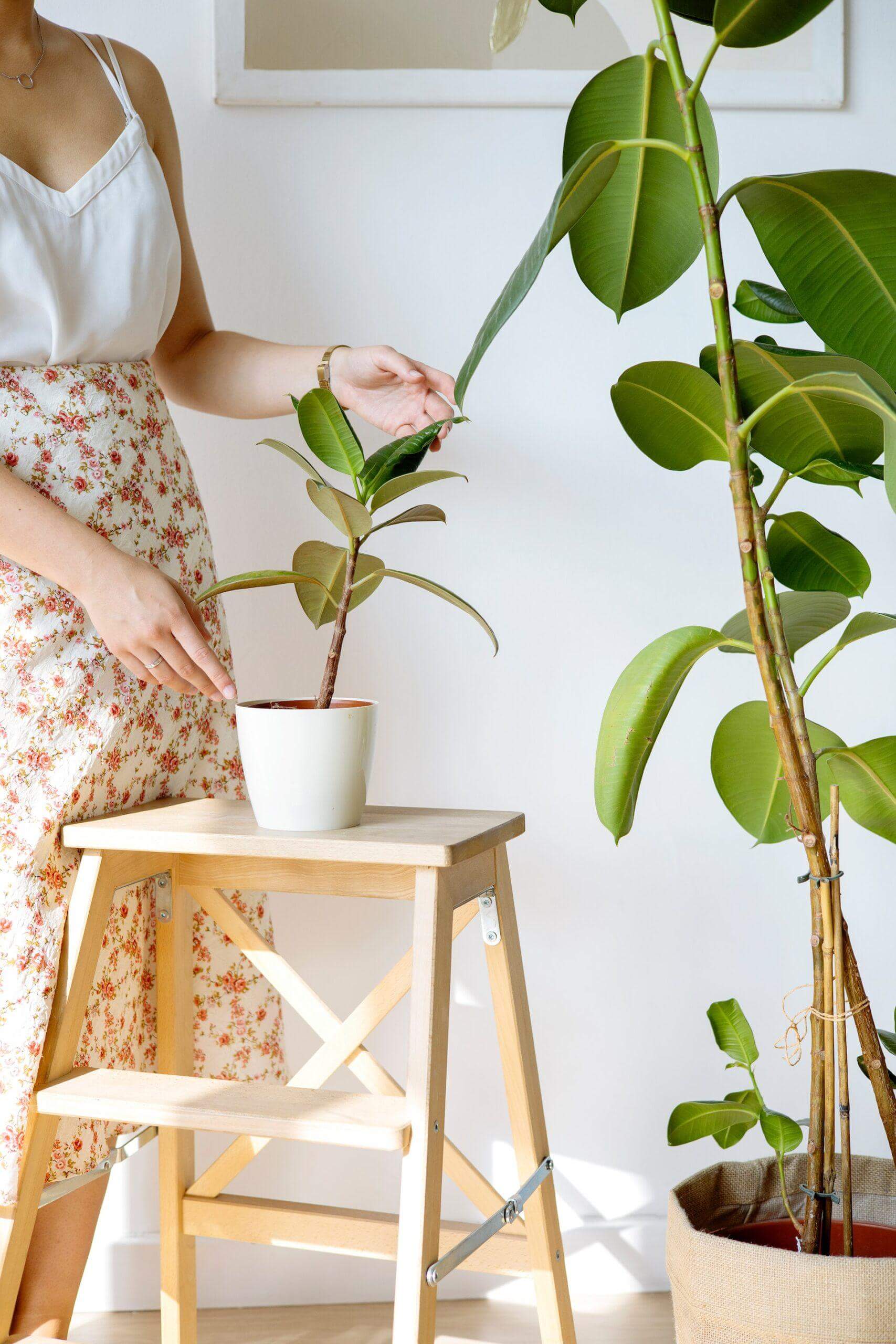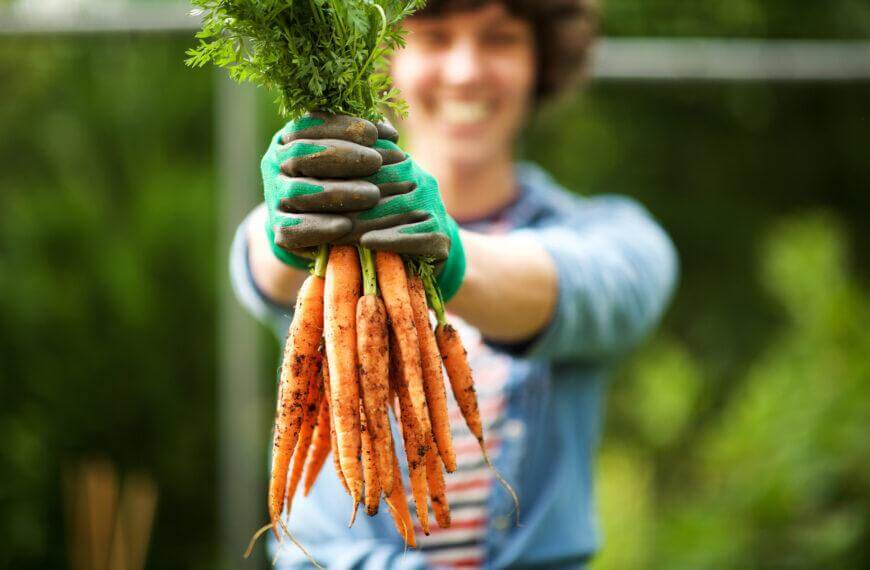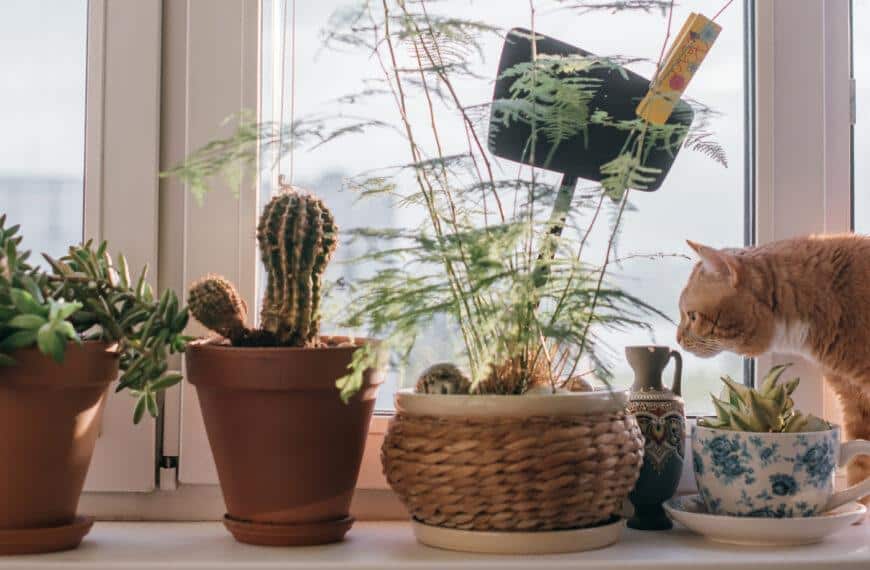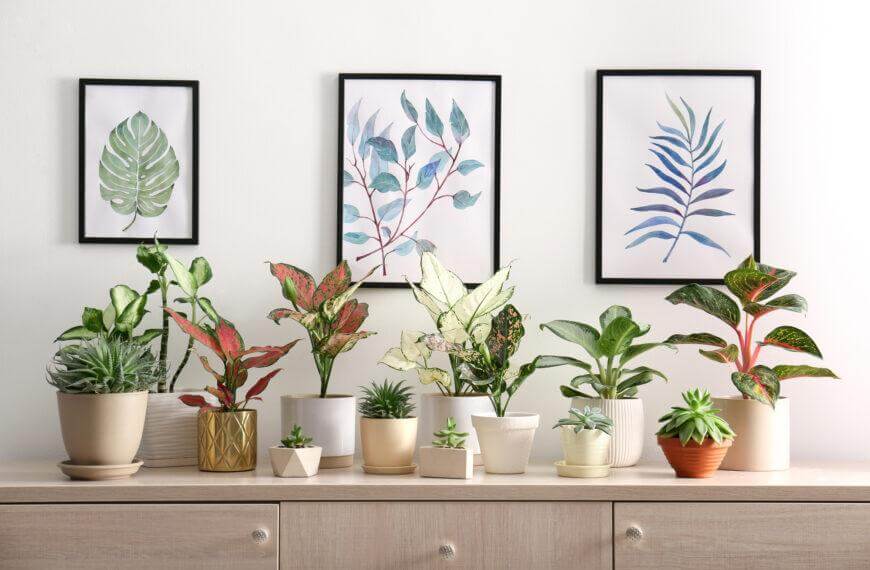Understanding Indoor Gardening
Table of Contents
To understand indoor gardening with its benefits and factors to consider, dive into this section. The benefits of indoor gardening include various aspects that not only improve air quality but also contribute to your overall well-being. Along with that, there are certain factors that you must consider while starting indoor gardening for maximum benefits.
Benefits of Indoor Gardening
Uncover the Benefits of Indoor Gardening!
Indoor gardening is a fun way to bring nature indoors and enjoy its advantages. Here are some of the perks:
- Air quality improvement. Plants purify the air, removing toxins and nasty chemicals.
- Mental health boost. Gardening is an excellent therapy for stress relief.
- Hobby satisfaction. It’s a creative hobby with problem-solving and improvement opportunities.
- Money saving. Grow fresh herbs, veggies, and fruits to save on groceries.
For optimal growth, use LED grow lights and hydroponic systems. Maximize your garden’s space with vining plants and trellis structures. Choose pots based on plant size and decor style. Use potting mix with rich organic matter for best results.
Indoor gardening: let the love for your plants grow.
Factors to Consider in Indoor Gardening
Gardening indoors is both interesting and challenging. It provides many perks – from health benefits to decorating your space – so it’s important to think about certain factors before beginning. Here are six to keep in mind for the optimum experience:
- Lighting requirements
- Temperature control
- Soil or Hydroponics for growth medium
- Air circulation
- Fertilizers and Nutrient levels
- Pests and disease management
Remember that plants require different care. The light needed may depend on where you place it in your home. Keep humidity levels balanced and hydrated. Consider soil or hydroponics for the growing medium.
These factors are important, as overlooking them may cause problems – or even kill the plants.
Do research before starting. Find out what the plants need and how to take care of them. Taking these precautions will lead to great rewards. Start your indoor garden now and reap the benefits! Who needs an air purifier when you have an indoor garden? #GreenThumbsUp
Impacts of Indoor Gardening on Air Quality
To improve the air quality in your home and enhance your overall well-being, learn about the impacts of indoor gardening on air quality. This section called “Impacts of Indoor Gardening on Air Quality” with sub-sections such as “Types of Plants that Improve Indoor Air Quality,” “Planting Techniques to Increase the Benefits of Indoor Gardening,” and “The Role of Indoor Gardening in Reducing Indoor Pollution” will show you how indoor gardening can help purify the air inside your home and offer numerous health benefits.
Types of Plants that Improve Indoor Air Quality
Indoor Plants that Enhance Air Quality! Plants can bring life to any room and also help purify the air. Natural air purifiers like Spider Plant, English Ivy, Bamboo Palm, Peace Lily, Rubber Plant, and Aloe Vera can all improve the atmosphere of your home or office.
They absorb toxins from the air and release clean oxygen in return. Plus, they reduce humidity, regulate temperature, and reduce noise. But make sure to research before choosing a plant, as different species have different needs, like sunlight, soil type, watering, etc. Prices may vary as well.
Pro Tip: Research your plants properly before getting them.
Gardening Tip: If your plants look unhappy, try talking to them before fertilizing them – it’s cheaper, and you may get some new friends too!
Planting Techniques to Increase the Benefits of Indoor Gardening
Indoor gardening is becoming increasingly popular due to its positive effects on air quality. To make the most of it, employ certain planting techniques.
- Mix peat moss and perlite instead of regular soil for better drainage in potted plants.
- Use grow lights suited to different stages of plant growth for better produce.
- Plant in containers that suit plant size or trim foliage regularly to prevent dampness and stagnation.
- Organic fertilizers are more efficient than synthetic ones, releasing nutrients over time.
It’s also important to water regularly, maintain humidity with a humidifier if needed, and ensure proper ventilation.
Houseplants can remove toxins such as Benzene and Formaldehyde, improving air purification. Indoor gardening can also promote mindfulness and relaxation, benefiting your mental health.
Position the plants based on their light requirements and move them around every few days for even sunlight distribution.
Through these simple strategies, you can benefit from improved oxygen levels, increased mental wellbeing, and a vibrant natural aesthetic. So go ahead and start a garden to fight indoor pollution sans the hazmat suit!
The Role of Indoor Gardening in Reducing Indoor Pollution
Indoor Gardening: A Sustainable Solution to Enhance Indoor Air Quality.
Indoor air pollution is a growing concern, causing adverse health effects. To reduce indoor pollution, indoor gardening can be a sustainable solution. Plants absorb pollutants like formaldehyde, benzene and carbon monoxide through photosynthesis and produce pure oxygen instead. This natural method of improving air quality brings numerous health benefits and boosts moods. It’s also low-maintenance and suitable for different spaces.
Ancient people used plants to combat environmental problems and now researchers have found ways to use them to clean indoor air.
Raising awareness of sustainability and environmental responsibility is essential. People should embrace natural solutions such as indoor gardening to promote healthier living environments. So come on down and join the revolution – where the air is clean and the plants are thriving, unlike my love life!
Well-being Benefits of Indoor Gardening
To improve your overall well-being with indoor gardening, delve into the sub-sections of health benefits, psychological benefits, and social and community benefits. These benefits can positively impact your physical and mental health, as well as your social connections. By exploring these sub-sections, you can gain a deeper appreciation for the positive impact that indoor gardening can have on your life.
Health Benefits of Indoor Gardening
Indoor Gardening: A Delicious Recipe for Enhancing Personal Well-being!
Indoor gardening isn’t just an intriguing way to add beauty to your home. It also offers many health benefits. Let’s take a look!
- Reduced Stress: Plants are natural stress busters. Just looking at them can bring a sense of relaxation and peace.
- Purified Air: Plants clean the air inside by taking away toxins and releasing oxygen. This makes the air fresher, reducing respiratory illnesses.
- Better Mental Health: Interacting with indoor greenery can be therapeutic. It gives the feeling of nurturing life – which leads to better mental health.
- Fitness Boosters: Gardening is a great physical activity. It keeps you healthy, flexible and boosts your overall fitness levels.
Including indoor gardening in your life might seem hard. It needs consistent effort and care. But it’s worth it! Don’t miss out on this amazing organic therapy that can help you create wellness.
Indoor gardening is a great way to get your hands dirty without complicating your life.
Psychological Benefits of Indoor Gardening
Indoor gardening is connected to many positive psychological outcomes. It’s a great hobby for those who want to relax and reduce stress. Here are the benefits:
- Improved mood: Caring for indoor plants boosts happiness and reduces anxiety and depression. It can bring a sense of well-being.
- Decreased stress levels: Growing indoor plants lowers cortisol, the hormone that triggers the body’s flight or fight response. Doing this regularly helps manage stress.
- Improved cognitive function: Focusing on indoor gardening can boost brain power and stimulate the senses.
Plus, picking plants that suit your space, like low light plants for dimmer spots, and starting out small, with easy-to-care-for plants, is smart.
Studies have shown that hospital patients with access to gardens or nature healed faster and felt less pain than patients without. So, it’s obvious that indoor gardening has real benefits for mental health and overall wellness. It even brings neighbors together to bond over their beloved houseplant, Phil.
Social and Community Benefits of Indoor Gardening
Indoor gardening encourages teamwork and collaboration among community members. It’s a great way to build new friendships and foster relationships between different age groups. Plus, it’s an affordable way to bring fresh, nutritious food to communities without easy access to produce.
Gardening indoors also provides people with opportunities to share knowledge and skills, while developing a sense of ownership and pride within the community. These benefits don’t just stop there though – studies have found that it can lead to better mental health outcomes, such as reduced anxiety and depression.
Urban dwellers who don’t have access to natural environments can particularly benefit from indoor gardening, as it gives them a chance to spend more time outdoors and engage with nature. And, don’t worry about rabbits stealing your veggies – at least, not when you’re gardening indoors!
Challenges and Solutions to Indoor Gardening
To overcome common indoor gardening challenges and successfully implement indoor gardening with the benefits it offers, this section dives into the solutions. You’ll find solutions to the most common indoor gardening difficulties in the first sub-section, followed by solutions that can help you overcome them in the second sub-section.
Common Indoor Gardening Challenges
Indoor gardening can be tricky. Here are some obstacles and how to tackle them.
Limited Space: Small spaces can make it hard to grow lots of plants, or big ones. Solutions? Try vertical gardening, use small containers, and pick plants made for indoor spaces.
Lack of Sunlight: Most indoor spots don’t get enough light for plants to grow. Solutions? Select plants that can handle low light, use artificial lighting like fluorescent bulbs and LEDs, or place plants near windows.
Watering and Drainage Issues: Overwatering or poor drainage can hurt plants. Solutions? Use soil that drains well, water plants at the right time, and let excess water out.
Monitor humidity, pests, and disease regularly to keep things optimal. Pro Tip: Automated irrigation systems like drip irrigation can help control water use. Why trust green thumbs when you can rely on a green light switch? Solutions galore!
Solutions to Overcome Indoor Gardening Challenges
Indoor gardening can be tricky at times, but with the perfect solutions, it can be a fulfilling experience. Here’s how to tackle these challenges:
- Pick the Right Plants: When picking plants for your indoor garden, choose ones that don’t need lots of light and are easy to take care of. Examples include snake plants, pothos, succulents and spider plants.
- Provide Ample Light: Plants still need sunlight even if they’re indoors. Put them close to windows or purchase artificial lighting.
- Proper Drainage: If water accumulates in the soil, root rot and other plant diseases may occur. Make sure your planters have drainage holes or add rocks or pebbles at the bottom.
- Control Pests Naturally: Pests such as mealybugs, spider mites and whiteflies are hard to manage indoors. Use natural remedies like neem oil or vinegar instead of harsh chemicals.
Plus, vertical gardens create a living wall of cascading greenery while using minimal floor space. And, certain houseplants like rubber trees and fiddle leaf figs purify the air while giving you more oxygen.
Although indoor gardening may be challenging, with proper knowledge and preparation, you can enjoy beautiful foliage all year round. Now, even those with black thumbs can create a gorgeous indoor garden that their neighbors will be jealous of (they never have to water anything!).
Tips for Indoor Gardening Success
To improve your indoor gardening success with the right plants, positioning, lighting, watering, fertilizing techniques, and avoiding common mistakes, you need to follow some tips. In this section, we will discuss the tips for indoor gardening using the solutions identified in the sub-sections: choosing the right plants for indoor gardening, positioning and lighting in indoor gardening, watering and fertilizing techniques for indoor gardening, and common mistakes to avoid in indoor gardening.
Choosing the Right Plants for Indoor Gardening
Indoor gardening is becoming more popular. To make sure your plants thrive, choose wisely! Think of the amount of light in your home. Low-light plants for dim areas and high-light plants for sunny spots. Then, assess the size of your space. Compact plants for smaller spaces and larger plants for bigger spaces. Lastly, think if you want maintenance-heavy or low-maintenance plants. Some require daily care while others can survive with occasional watering.
Remember, it’s not just about how it looks. It’s also about maintaining its health and boosting air quality. Avoid the hassle with the right indoor plant. Follow these tips to pick the perfect one for your home!
Positioning and Lighting in Indoor Gardening
Position and lighting matters when it comes to making your indoor garden flourish! Place plants near windows for natural light, and make sure it’s South-facing for winter sunlight. Each plant has its own light intensity preference, so proper placement is key.
Artificial lighting can also help, by providing extra photosynthesis time. Brightness encourages growth, reduces foliage stress, and helps with nutrient uptake. Regular lighting cycles simulate natural daylight so plants can rest too.
Lighting needs and preference vary according to species. Cooler white light replicates daylight and is great for fast-growing plants. Warmer reddish-toned lights resemble autumn sunlight and are perfect for flowering stage development.
Water and fertilize your indoor garden for optimal growth. And there you have it – your indoor garden will be thriving in no time!
Watering and Fertilizing Techniques for Indoor Gardening
Indoor gardening is a great way to keep your space green and healthy. To ensure success, it’s important to use the right watering and fertilizing techniques
- Regularly water your plants, but be careful not to overwater.
- Use a well-draining soil mix to prevent waterlogging.
- Fertilize every few weeks with balanced fertilizer.
- Organic fertilizers can offer a natural approach.
- Test your soil for the right nutrients for your plants.
Remember, each plant has unique needs. Research the specific needs of each one.
Pro Tip: Use room-temperature water when watering. Cold water can shock and damage roots.
Crazy Tip: If your plants start talking, open a window or stop talking to them!
Common Mistakes to Avoid in Indoor Gardening
Dodge Indoor Gardening Pitfalls!
Gardening indoors can come with some hiccups! Overcome them and have a flourishing experience. Here are some things to watch out for:
- Too much watering: This will make your plants wilt and die.
- No drainage: This can rot the roots and kill the plants.
- Insufficient light: It reduces the photosynthesis process and slows down growth.
- Pet-friendly Plants: Make sure what you plant won’t harm your furry friends if they consume it.
- Incorrect soil: The right soil is key for optimal growth.
- Pest prevention: Not taking action against pests can damage your plants.
Be aware of these issues to ensure successful indoor gardening. And remember: spot pests early and get rid of them! Enjoy the benefits of indoor gardening: fresh air and stress relief!
Conclusion: Improving Air Quality and Well-being with Indoor Gardening.
Indoor gardening has been proven to enhance air quality and people’s well-being. By adding plants to indoor spaces, pollutants are eliminated, thus providing improved air quality. Plants also have an effect on reducing stress and increasing happiness.
Plus, indoor plants increase oxygen levels and reduce carbon dioxide levels, leading to better physical health. Unique microorganisms in soil can even boost immunity.
It’s essential to remember that all plants are not suitable for indoor environments. When selecting plants for an indoor garden, one must consider the lighting needs, humidity tolerance and temperature requirements.
History reveals that indoor gardening dates back centuries ago with ancient Egyptians bringing nature indoors. Nowadays, technology has made it easier to maintain a healthy plant environment with solutions such as smart pots and grow lights.
Frequently Asked Questions
Q: What are the benefits of indoor gardening?
A: Indoor gardening can improve air quality, enhance well-being, reduce stress and anxiety, and even produce fresh food and herbs.
Q: How does indoor gardening improve air quality?
A: By absorbing pollutants and releasing oxygen, indoor plants can purify the air and reduce the levels of toxic chemicals such as benzene, formaldehyde and trichloroethylene.
Q: Can indoor gardening improve mental and emotional well-being?
A: Yes, studies have shown that indoor gardening can reduce stress, improve mood, increase creativity and productivity, and even lower blood pressure.
Q: What are the best plants for indoor gardening?
A: Some of the best plants for indoor gardening include spider plants, peace lilies, English ivy, rubber plants and Boston ferns, as these plants are both easy to care for and great at purifying the air.
Q: Do I need a lot of space and sunlight for indoor gardening?
A: No, many indoor plants can thrive in low-light conditions and don’t need a lot of space to grow. Some plants, such as herbs and microgreens, can even be grown in small containers on a windowsill or countertop.
Q: Can indoor gardening save me money on groceries?
A: Yes, by growing your own herbs, vegetables and fruits indoors, you can save money on groceries and enjoy the freshness and flavor of home-grown produce year-round.




